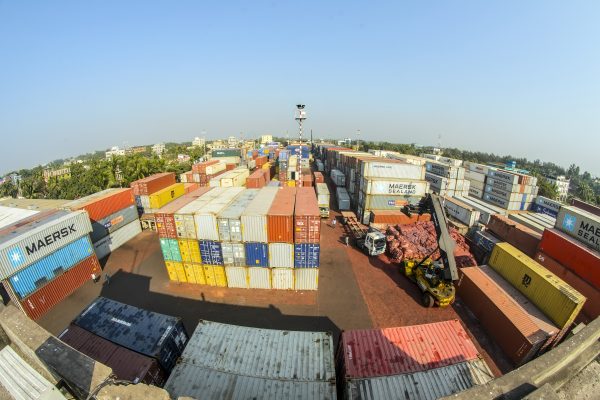Eight months after the ouster of Bangladesh’s Prime Minister Sheikh Hasina, India’s Prime Minister Narendra Modi and Bangladesh’s Chief Adviser Muhammad Yunus met for the first time on April 4 on the sidelines of the sixth BIMSTEC summit in Bangkok.
The meeting was important. It was the first face-to-face meeting between the two leaders since Yunus took charge of the interim administration in Bangladesh on August 8, and came amid deteriorating bilateral relations.
During the meeting, the two leaders raised their main concerns. Modi called attention to the targeting of minorities in Bangladesh, while Yunus reiterated Dhaka’s request for Hasina’s extradition. After the meeting, Dhaka described the talks as “very constructive and fruitful,” while India pointed out that both leaders had agreed that all bilateral issues should be addressed “through constructive discussions.”
The biggest achievement of the meeting was that it happened, especially since India had been cold-shouldering multiple requests from Dhaka for a meeting between the two leaders. Consequently, the Bangkok meeting was seen as an ice-breaker, “the first tentative step towards mending strained relations.”
The “long-awaited meeting” between the two leaders is “a positive sign for the Bangladesh-India relationship,” Daily Star observed in an editorial, adding that it “raises hope for improved ties” between the two neighbors.
However, such hopes were short-lived.
Three days after the Bangkok meeting, the Indian government announced the withdrawal of a transshipment facility granted to Bangladesh in 2020, which allowed it to route its export cargo to third countries via Indian Land Customs Stations, airports and seaports in India.
According to Randhir Jaiswal, the spokesperson of India’s Ministry of External Affairs, “significant congestion at Indian airports and ports,” which was causing “logistical delays and higher costs” for Indian exports, was the reason for the decision. Apparently, Indian exporters have been raising concerns over clogged ports due to the transshipment facility given to Bangladesh, and have been petitioning the government to act by halting such facilities to the neighboring country.
That action came on April 8.
While logistical problems and economic concerns may be the underlying reasons for the Indian decision, geopolitics determined its timing.
During his visit to China on March 26-29, Yunus made a statement that ruffled Delhi’s feathers. Underscoring the landlocked nature of India’s Northeast, Yunus had pointed out that the region has “no way to reach out to the ocean. We are the only guardians of the ocean for this region.” This “opens up a huge possibility” for “an extension of the Chinese economy. Build things, produce things, market things, bring things to China, bring it out to the whole rest of the world,” he said.
The Indian Northeast was insurgency-wracked for decades, and both Bangladesh and China have in the past fueled these insurgencies and provided anti-India insurgent groups with weapons and sanctuary. While most of the insurgencies have subsided, the situation in the Northeast remains restive. The region is India’s sensitive soft underbelly, vulnerable to meddling by hostile foreign powers.
Particularly vulnerable in this regard is the Siliguri Corridor, a sliver of territory that is just 22 kilometers at its widest and is the Northeast’s only land link to the Indian mainland. Bangladesh and Nepal share borders with this corridor, also known as the “Chicken’s Neck,” with Bhutan and China just a few kilometers away.
Late last year, social media was abuzz with reports of Bangladesh reviving an old airbase with Chinese assistance at Lalmonirhat in north Bangladesh, just 12-15 km from the Indian border and around 135 km from the Siliguri Corridor. While these reports were dismissed as “fake news” back then, the issue came alive again during Yunus’ recent visit to China.
Yunus may have only spoken about economic possibilities. Yet by referring to the “landlocked” Northeast, he underscored India’s vulnerability in the region and the leverage Bangladesh holds there. Worse, he poked India in the eye by inviting Chinese collaboration at this point of Indian vulnerability.
Yunus’ remarks were, no doubt, aimed at underscoring to the Modi government that Dhaka had options other than India. It had cards — read the China card — to play and would not hesitate to do so if needed. Indeed, the Bangkok meeting is widely seen in Bangladesh as a victory for Yunus, his China visit having forced the Indian prime minister to meet him.
However, the latest round may have gone in India’s favor.
The handshakes at Bangkok notwithstanding, India went on to withdraw transshipment facilities to Bangladesh within days of the Bangkok meeting. Delhi hit Bangladesh where it would really hurt – its international trade.
What is more, the decision to deny Bangladesh transshipment cargo access to Indian ports coincided with Trump’s announcement of a 37 percent “reciprocal” tariff on imports from Bangladesh. Although this has been paused for 90 days, it has plunged the Bangladeshi economy into deep uncertainty; the U.S. is Bangladesh’s largest single-country market. India’s decision to shut transshipment facilities to Bangladesh will impact the latter’s trade, particularly with Southeast Asian, Central Asian, and European markets. Bangladeshi exporters “will now have to face more expensive, time-consuming, and uncertain transportation routes.”
It could result in garment factories shutting down, forcing hundreds of thousands out of work.
By needling India, Yunus may have won a bit of applause in Beijing, even impressed anti-India sections at home. However, he seems to have set off a chain of events that could deepen Bangladesh’s problems and delay normalization of relations with India

